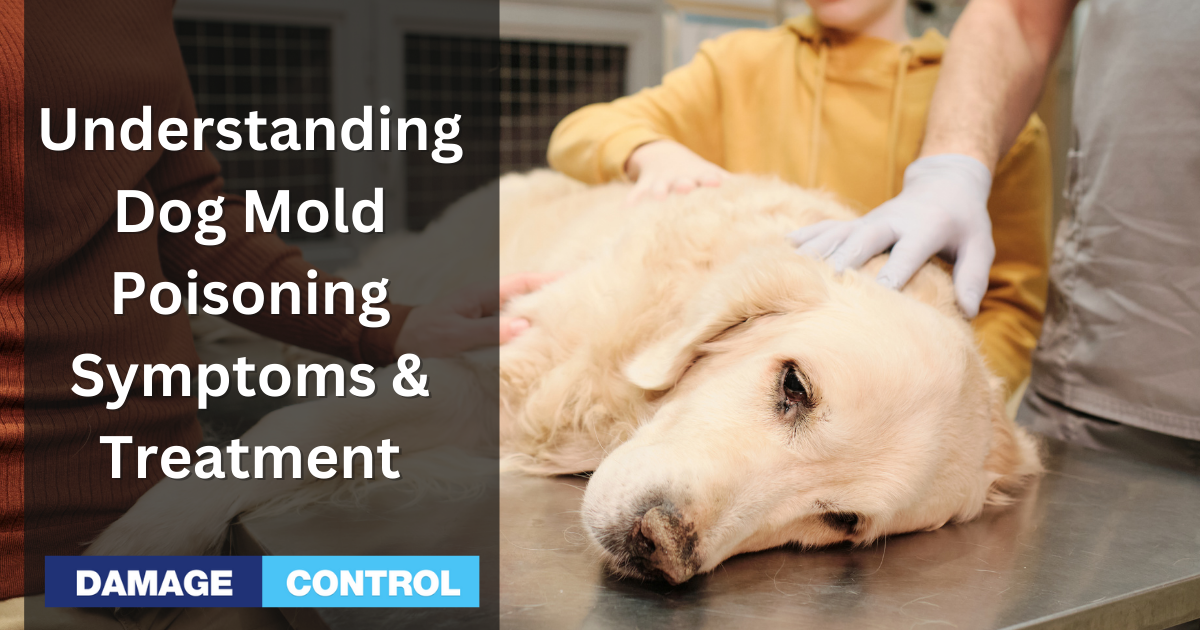Is Mold Bad For Dogs?
Yes, mold is bad for dogs. It isn't good for dogs as it is for humans, but they may be more sensitive to its effects than we are. Even though most types of mold aren't toxic, the toxic ones are common enough that they should be a concern. “Toxic black mold”, scientifically known as Stachybotrys chartarum, is the most serious type you and your furry friend can be exposed to
How Can My Dog Be Exposed To Mold?
Your dog can be exposed to mold in various ways, including just by existing. Most environments, especially outdoors, have some concentration of mold spores in the air; it's just a matter of how much there is. Unless your dog has an extreme sensitivity to mold, you don't have much to worry about in their day-to-day life. But, there are a few instances where you should be concerned.
Inhaling Mold
You shouldn't let your dog sniff around where you know mold exists. Maybe it's a downstairs bathroom you haven't gotten around to fixing yet or a stuffy old closet or basement that you need to get cleaned out. Either way you go, your dog will be exposed to more potentially harmful mold spores through the air there than if they were outside. Long story short, it's not to let your dog sniff around where they shouldn't.
Ingesting Mold
One of the most serious conditions dogs can develop from ingesting moldy items is ergotism. Ergot, also called Claviceps purpurea, is a fungus that can contaminate grains and is most noticeable on the seed heads of infected grains. The dark-colored fungus can protrude from the seed heads and is typically much larger than the seeds. Foods made from contaminated grains, such as animal feed or rye bread, can cause convulsions, dizziness, blood vessel constriction, and eventually gangrene.
Dog Mold Allergies & Symptoms
In humans, mold allergies manifest mostly as respiratory issues. Mold allergies in dogs, on the other hand, tend to manifest as skin problems:
- Scratching
- Scaly skin
- Hair loss
- Chewing or licking (especially the paws)
- Chronic ear infections
- Thick, stinky skin
- Head shaking
- Hot spots
Long-Term Health Effects of Mold Exposure in Dogs
The long-term health effects of a dog being exposed to mold depend on the dog. Some dogs may display little to no symptoms when exposed to large amounts of mold, while others with severe allergies may be miserable with itching and ear infections simply due to living.
In addition to the allergy symptoms above, symptoms of chronic mold exposure and even more serious health conditions include the following:
- Confusion
- Neurological symptoms
- Lethargy
- Respiratory distress
- Bleeding from the nose or mouth
- Nasal swelling
- Lack of appetite
- Sneezing
- Nasal pain
How To Prevent Dog Mold Poisoning
Preventing dog mold poisoning is fairly simple if you follow the tips below.
Don't Let Your Dog Eat Moldy Food
You should not let your dog consume any moldy food. Despite the common belief that dog digestive systems are “stronger” than humans, this is only true because dogs have a ten times higher concentration of hydrochloric acid in their stomachs. This doesn't mean they're garbage disposals and can be fed anything. In addition to mold, any spoiled food can contain bacteria and toxins that can survive your dog's tough stomach and cause food poisoning.
Sources of contaminated food:
- Spoiled dog food
- Moldy bread
- Spoiled meat
- Spoiled milk
Treat Dog Allergies
If you have a dog that is constantly stinky and displaying the above symptoms, it may have a significant allergy to mold. There are a few prescription medication options for such allergies, but they're worth trying if you can't seem to get your dog any relief. Cetirizine is an OTC allergy medication that some veterinarians recommend instead of Benadryl because it seems to help with skin allergies more. A prescription shot you can acquire is the Cytopoint shot, given every three months. Talk to your veterinarian about your dog's skin condition before deciding what to do.
Eliminate Sources of Mold In Your Home
If you have mold in your home and you know it, it could be causing your dog's allergies. If you're not sure where your dog could be exposed to mold, here are some locations in your home where you should check out:
- Anywhere your dog spends a significant amount of time
- Their food
- Their bedding
- Kitchen
- Bathroom
- Basement
- Laundry room
- Garage
If you've noticed that your dog is particularly itchy and you can't find a source of mold anywhere, simply dusting your home thoroughly and cleaning it more often may help.
Conclusion
The dog is man's best friend, so let's treat them like it. If you suspect that your dog has been exposed to a significant amount of mold or that the cause of their skin conditions may be mold allergies, you should get it dealt with immediately. This could mean doing a deep clean of your home or something as extreme as calling a mold remediator to fix an old, stinky bathroom.

